

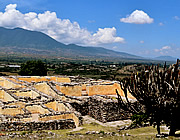
Yagul is an atmospheric small Zapotec site with a multi-roomed palace, many tombs, a huge ball court and spectacular views.
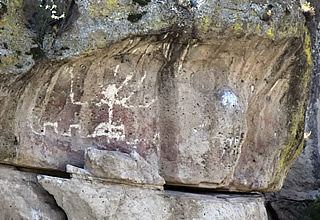 Ancient pictographs near Yagul.
Ancient pictographs near Yagul.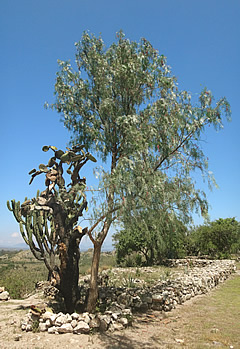
About 35 km east of Oaxaca, Yagul is an atmospheric hilltop site with some mysterious aspects to its ruins. The views are tremendous.
Yagul means "tree" or "old stick" in the Zapotec language.
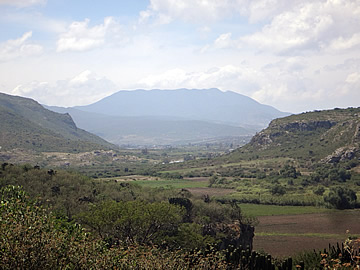
Its peak period was 750 - 950 AD, roughly the same period as Atzompa, though, like Monte Alban, there is evidence of people living here since 3,000 BC. Prehistoric caves in the area have provided evidence of the evolution of man from a hunter-gatherer to a settled cultivator.1
The site is known for its large number of patios, a huge ball court and a maze-like area of rooms. The entrance to some of these rooms had been closed off by new walls leaving rooms completely isolated with no entrance. The reason for this practice is unknown.
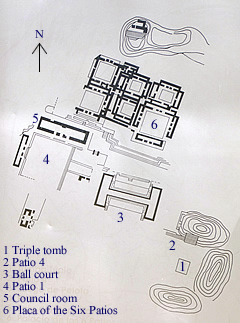
The higher part of the city functions as both an administrative and religious centre, as well as there being palaces and defensive areas, set out on a series of terraces.
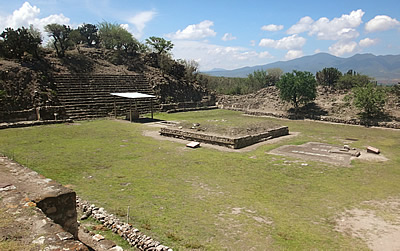
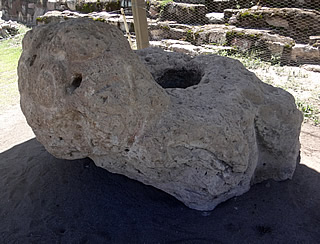
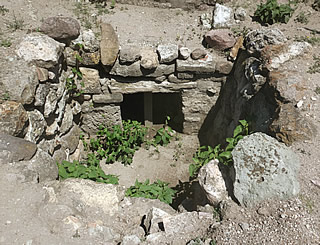
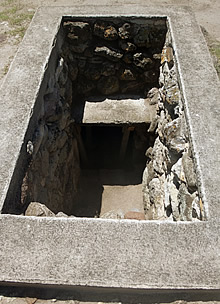
There are several tombs in the plazas, for what must have been important people to be buried in such a prestigious place. Ordinary people lived lower down the slopes where there were also agricultural terraces. Water was sourced from the Rio Seco which forms the limit of the site.
Patio 4 has a number of tombs, including a triple of three T-shaped tombs. All three had been looted in prehispanic times.
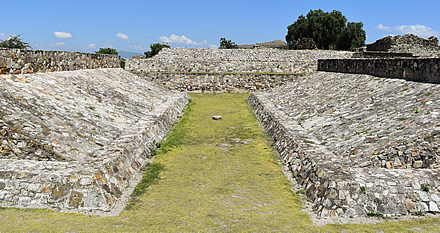
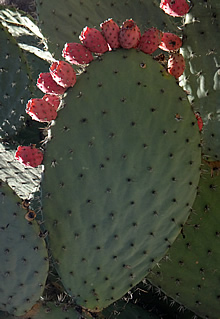
Yagul has the largest ball court in the Oaxaca Valley.
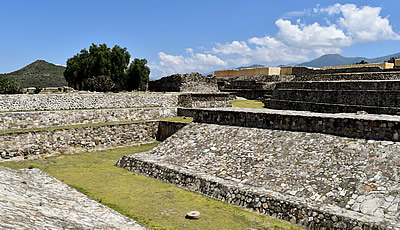
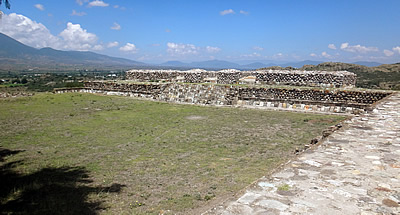
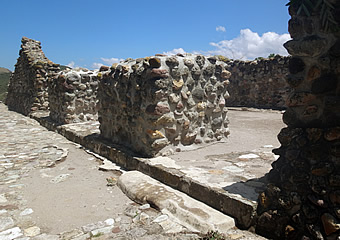
The internal walls of the Council Chamber once had three layers of stucco and, like the floor, were painted red.
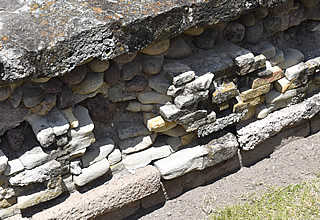
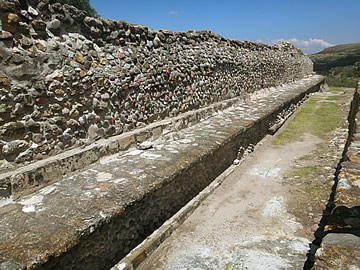
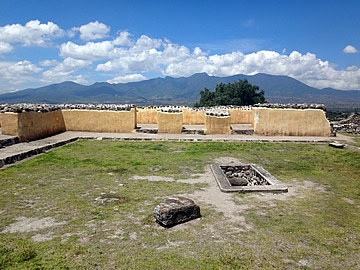
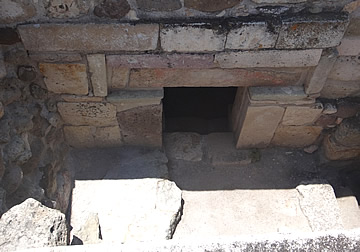
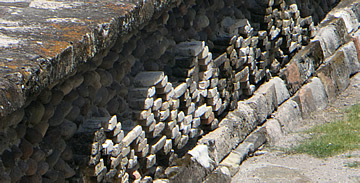
The Palace of the Six Patios is a real labyrinth, with blocked entrances, tombs and columned halls.
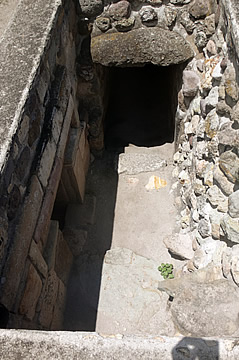
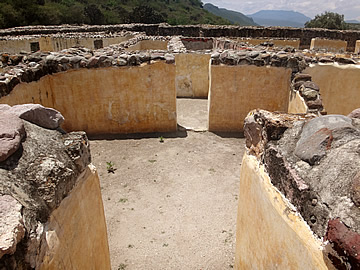
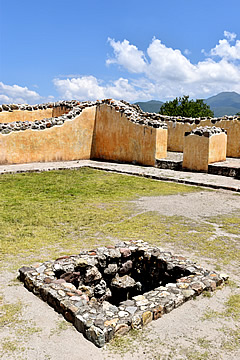
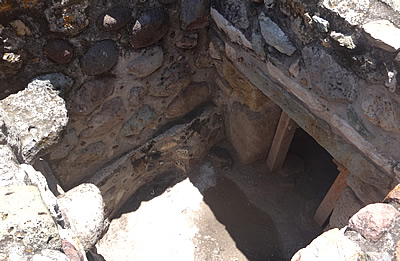
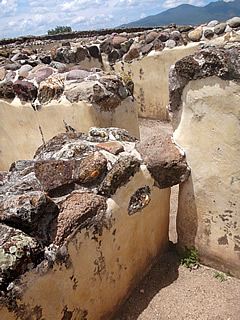
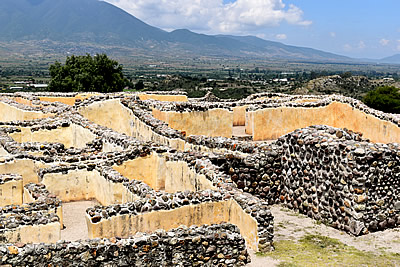
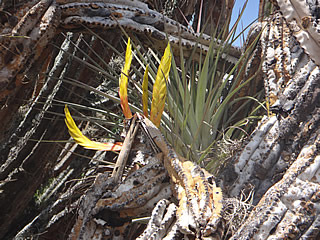
We climbed the hill a little way to the north of the site from where the views over the site and beyond into the valley and across to the mountains are spectacular.
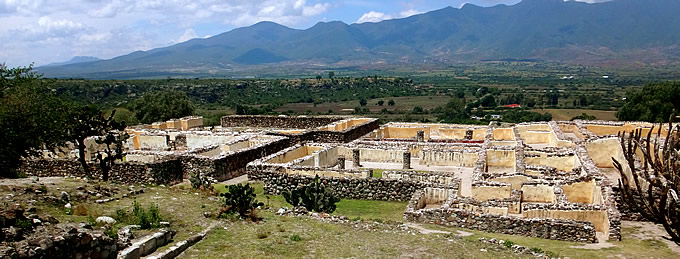
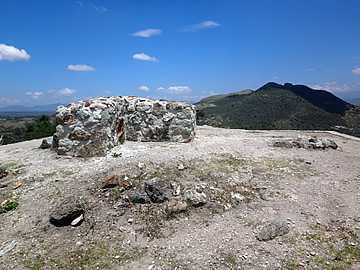
There are foundations and the remnants of a wall. Also curious indentations in the rock surface.
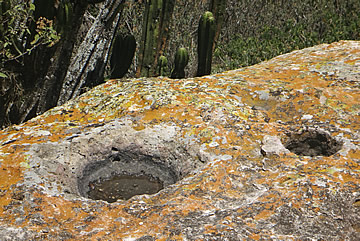

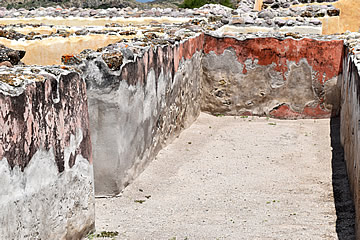
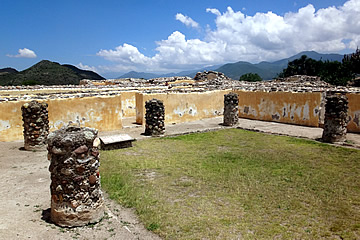
Even higher to the east is the site of the fortress, which we didn't climb up to - far too hot!
On our way back down we had a better look at the columned rooms in the Palace of the Six Patios before leaving.
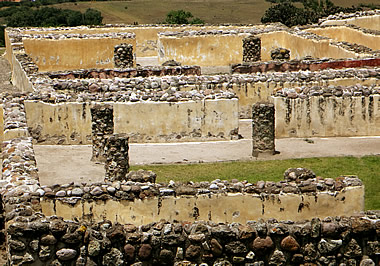
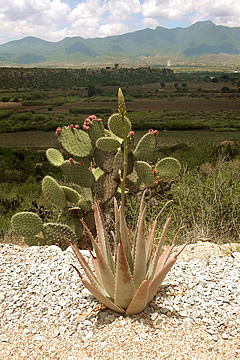
Yagul is a lovely site to explore, with plenty of interest without being overwhelming - and the views are amazing.
There are some great cacti here too - candelabra, prickly pear (nopal), agave.

